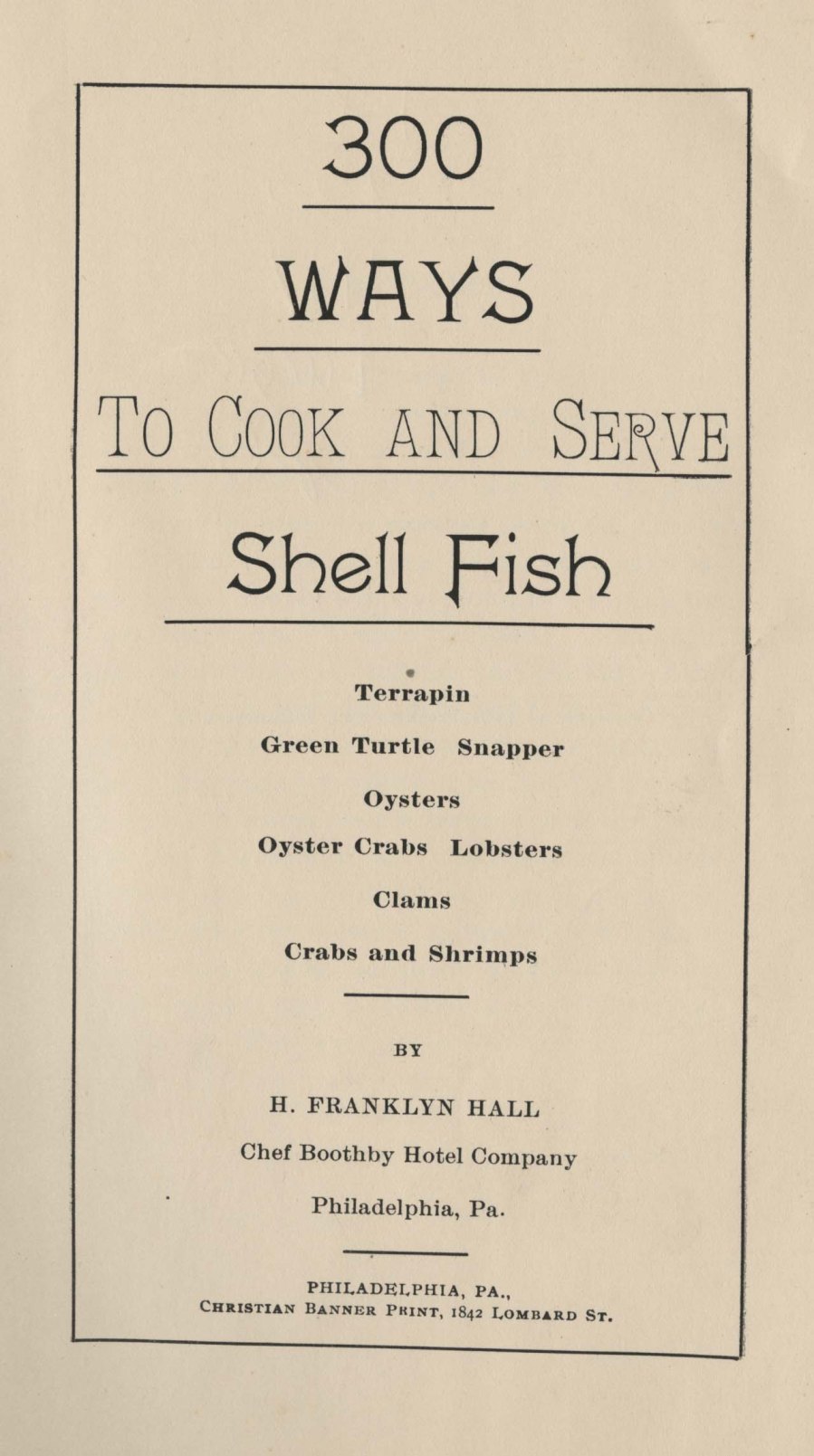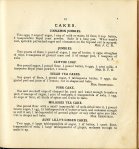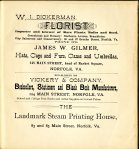Some recent research has led me to a little bit of the history of oyster availability in the early 20th century. I was fascinated to learn that landlocked (or at least landlocked from the eastern seaboard) locations like Kentucky and Tennessee would have train cars loaded with ice and oysters brought inland for purchase and consumption. In those, and other regions, it would be a bit of a status symbol to be able to afford and share this shellfish delicacy. And the cookbooks of the time reflected this: regional cookbooks from areas inland began to include recipes for clams, oysters, and other items that would continue to become easier to obtain. So, with shellfish in mind, and in honor on of Black History Month, I thought I would share a relatively recent publication by an African-American chef we were able to acquire last summer: 300 Ways to Cook and Serve Shellfish: Terrapin, Green Turtle, Snapper, Oysters, Oyster Crabs, Lobsters, Clams, Crabs and Shrimp. Written by H. (Harry) Franklyn Hall, it was published in Philadelphia in 1901.


Fair warning: Historically speaking, this cookbook has more turtle, terrapin, and snapper recipes than I’ve ever encountered in a single cookbook–37 of them. It is also filled to the gills (seafood pun intended, of course), with oyster recipes–a whopping 101 of them, to be exact!
Interestingly, this book has several introductions. There’s a true intro before the table of contents by Hall, pointing out the economy and purpose of the book (with recipes made “plain and simple, so that not only the lady of the house can understand them, but to save her annoyance, the butler, housekeeper or cook, not only the proprietor, steward or chef, but the side cook, all of whom hope to become chef some day as well”). In other words, Hall has multiple audiences in the home and professional sphere. The second “introduction” is about Hall himself, which we’ll come back to shortly. After the table of contents, though, I found the “Caution,” which includes some of Hall’s advice–follow directions and don’t cut corners!
Most persons think that it is not necessary to follow instructions exactly as given in preparing, cooking or serving an article of food. The same is a common but serious mistake. For instance, if you think it does not matter whether you bleed a green turtle five minutes or an hour, you will simply make the mistake that will keep you from ever making the kind of clear green turtle soup containing clear bottle green meat with the soft, smooth, peculiar flavor, which is procured in houses whose cuisine department is under the management of Chefs, who take on chances on hit-or-miss cooking…
Even scanning through this book was a huge education for me. I grew up eating seafood and I still adore it (though it took me a long time to come back around to raw oysters). I would rather cook and eat shrimp or fish before I would dig into a steak or a pork chop. Now, if you asked me to filet a fish, it wouldn’t be pretty–I’m no professional, but I could do it and make it tasty. Turtles and terrapins, on the other hand, are way out of my wheelhouse. Hall’s book, however, offers step-by-step, enlightening instructions:
![Snapper [snapping turtle] recipes](https://whatscookinvt.wordpress.com/wp-content/uploads/2017/02/tx753h17_24.jpg?w=598&h=1024)

While turtles, terrapins, and oysters do seem the larger focus, I decided to share a few pages from the more underrepresented shellfish: clams, lobster, and crab. Opposite the start of chapter on crab, there’s also an advertisement. Apparently Hall was in the self-promotion business, too, like any good chef, and at least some of his recipes could be acquired already prepared! There’s a fair bit of overlap with the lobster, crab, and shrimp. You often see a recipes that says something to the effect of “prepare as you would for lobster xx, but use crab instead.” Once you nailed the technique, the protein could be swapped.
The book tells us a bit about where Hall worked over his 29+ year career, in hotels and restaurants in Rhode Island, New Jersey, and Pennsylvania (with the 15 years leading up to the book at the Chef Boothby Hotel Company in Philadelphia, which “contain[s] the generally acknowledged largest and finest oyster and shell fish department in the world”). A little genealogical research turned up that he was born in Washington, DC, in 1853. Around 1874, he was married and his wife, Georgia, was also born in 1853 in DC. According to the 1900 census, where he is listed as “Harry F. Hall,” they never had any children. Unfortunately, I can’t find a record of either of them after 1900 (or rather, after 1901 when the book was published), so I’m not sure they died before the 1910 census, if somehow they were recorded under something that isn’t coming up in a search, or if they just slipped through the records somehow. But the 1900 census certainly gave me more than I had first thing this morning. 🙂
300 Ways to Cook and Serve Shellfish is available online in its entirety, for all your turtle, crab, shrimp, lobster, clams, and oyster needs, too! It was Harry Franklyn Hall’s only book, despite his obviously long career in the cooking world, but I think it says a great deal about work, his expertise, and his efforts to bring shellfish to home cook. In other words, it’s worth a look–you might just find something to make today!

















